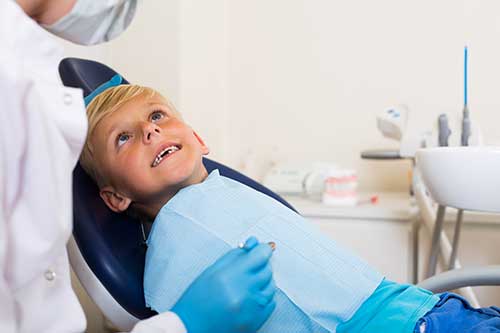Our Legacy Orthodontics Statements
Legacy Orthodontics Can Be Fun For Everyone
Table of ContentsThe smart Trick of Legacy Orthodontics That Nobody is Talking AboutThe Single Strategy To Use For Legacy OrthodonticsNot known Facts About Legacy Orthodontics5 Easy Facts About Legacy Orthodontics ExplainedLegacy Orthodontics Things To Know Before You Buy
At Advanced Orthodontics, we offer patients with a holistic therapy experience. Furthermore, we use flexible treatment routines, versatile settlement options and an enjoyable, pleasurable experience. orthodontist. Call ( 480) 357-4900 today to find out more and schedule a consultation.An orthodontist is a dental expert trained to identify, stop, and treat teeth and jaw irregularities. They correct existing problems and are trained to identify problems that may create in the future. Orthodontists collaborate with individuals of any ages, from children to adults. Individuals often associate a perfect smile with excellent health and wellness.
Malocclusion, or misaligned teeth, can result in dental concerns, consisting of tooth degeneration, gum condition, and challenging or excruciating eating. Not every person is born with straight teeth. If you have a bad bite or big rooms between your teeth, you may wish to consult a dental practitioner specializing in orthodontic treatment.
Not known Incorrect Statements About Legacy Orthodontics
( Image Credit Scores: DigitalVision/Getty Images) Orthodontists make use of taken care of and removable oral devices, like dental braces, retainers, and bands, to change the placement of teeth in your mouth. Orthodontic treatment is for dental irregularities, consisting of: Uneven teethBite troubles, like an overbite or an underbiteCrowded teeth or teeth that are also far apartJaw misalignmentThe goal of orthodontic therapy is to improve your bite.
A healthy bite guarantees you can consume, chew, and talk appropriately. While you could consider orthodontists as generally for children or teens that need braces, they can fix dental troubles at any kind of age. Orthodontists participate in college, oral institution, and orthodontic college. After college graduation, they invest 2 or 3 years in an orthodontic residency program.
All orthodontists are dental professionals, but not all dental experts are orthodontists. Orthodontic residency programs provide extensive, focused direction for oral specialists. They concentrate on 2 locations: Just how to correctly and safely move teeth Just how to effectively assist growth in the teeth, jaw, and faceOnce an orthodontist has actually completed training, they have the choice to end up being board accredited.
4 Easy Facts About Legacy Orthodontics Shown
Misalignment, or malocclusion, is the most usual reason people see an orthodontist. It is hereditary and is the result of dimension distinctions in between the top and reduced jaw or between the jaw and teeth. Malocclusion leads to tooth overcrowding, a misshapen jaw, or uneven bite patterns. Malocclusion is usually treated with: Your orthodontist connects metal, ceramic, or plastic square bonds to your teeth.
If you have only small malocclusion, you may be able to make use of clear dental braces, called aligners, as Full Article opposed to typical dental braces (https://writeablog.net/legacyortho/your-smile-deserves-the-best-choose-a-leesburg-orthodontist). Some people require a headgear to help move teeth into line with stress from outside the mouth. After braces or aligners, you'll require to use a retainer. A retainer is a personalized gadget that keeps your teeth in place.
They're usually used on kids. They can create added room in the mouth without needing to draw teeth. If you have a severe underbite or overbite, you could need orthognathic surgery (likewise called orthodontic surgical treatment) to extend or shorten your jaw. Orthodontists utilize cables, medical screws, or plates to sustain your jaw bone.
You may need to see an orthodontist if you have: Crowding or otherwise adequate area for every one of your teethOverbite, when your top teeth come over your bottom teethUnderbite, when your bottom teeth are also much forwardSpacing or issues with gapsCrossbite, which is when your upper teeth fit behind your bottom teeth when your mouth is closedOpen bite or an upright void in between your front base and top teethMisplaced midline, when the center of your bottom and top teeth don't align Fixing an oral malocclusion can: Make biting, chewing, and speaking easierImprove the balance of our face and your general appearanceEase discomfort from temporomandibular joint conditionsSeparate your teeth and make them less complicated to cleanse, aiding prevent dental caries or dental caries It's frequently a dental professional who initially notifications misaligned teeth during a routine test.
The Basic Principles Of Legacy Orthodontics

Throughout your initial orthodontic assessment, you'll likely have: A dental examPhotos taken of your face and smileDental X-raysPanoramic (360 degree) X-rays of your face and headImpressions to produce molds of your teethThese tests will certainly help your orthodontist understand exactly how to continue with your therapy. braces. An orthodontist is a dentist who's had training to treat your teeth and jaw
Orthodontists may perform surgical treatment, exams,X-rays,and more to help you achieve an extra comfy, much healthier smile. An orthodontist is concentrated on your bite, so something like a broken tooth would be dealt with by a dental professional. Orthodontists are dental practitioners yet not all dental professionals are orthodontists. Orthodontists are concentrated on your bite, or the means your teeth fit with each other, and the straightness of your teeth.
Ever before questioned exactly how celebrities constantly seem to have flawlessly straightened teeth? The response typically hinges on the experienced hands of an orthodontist. What precisely does an orthodontist do? Orthodontists are dental specialists that concentrate on remedying abnormalities in the teeth and jaws. Their expertise goes past just producing an attractive smile; it encompasses boosting your total oral health and wellness and function.
A Biased View of Legacy Orthodontics

, orthodontists have a varied toolkit at their disposal. These reliable braces use a system of braces adhered to the teeth and attached by cables.
These removable trays are tailor-made to progressively shift the teeth's setting. In situations of narrow jaws, palatal expanders can be used to develop area for proper tooth placement.